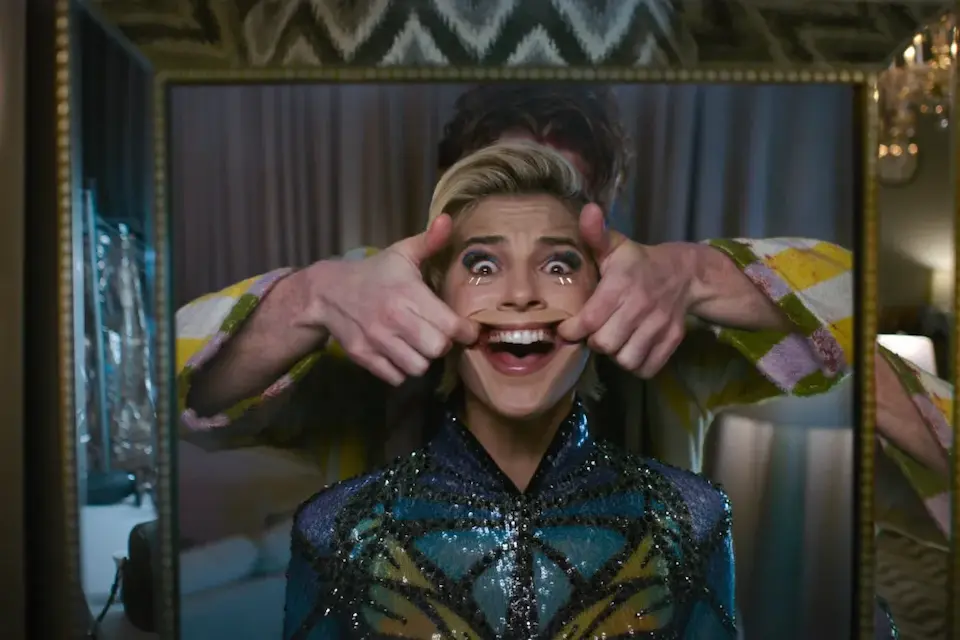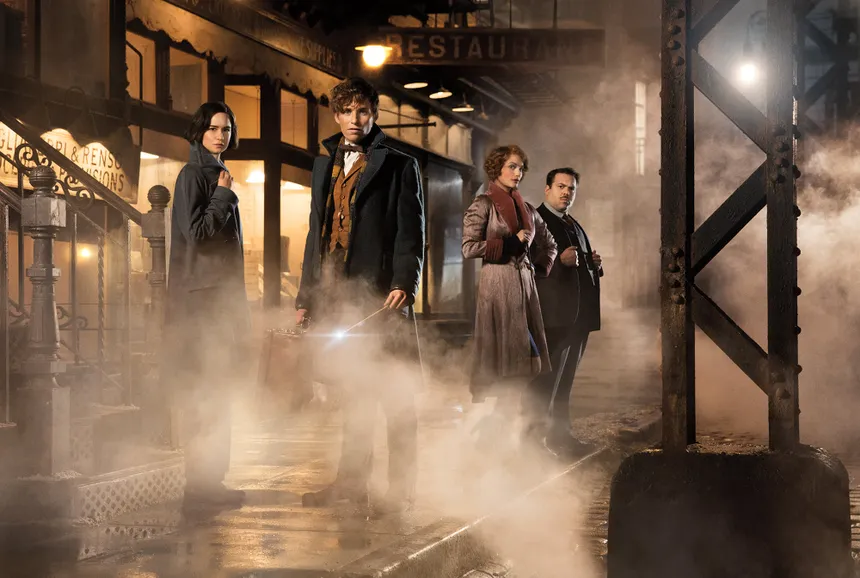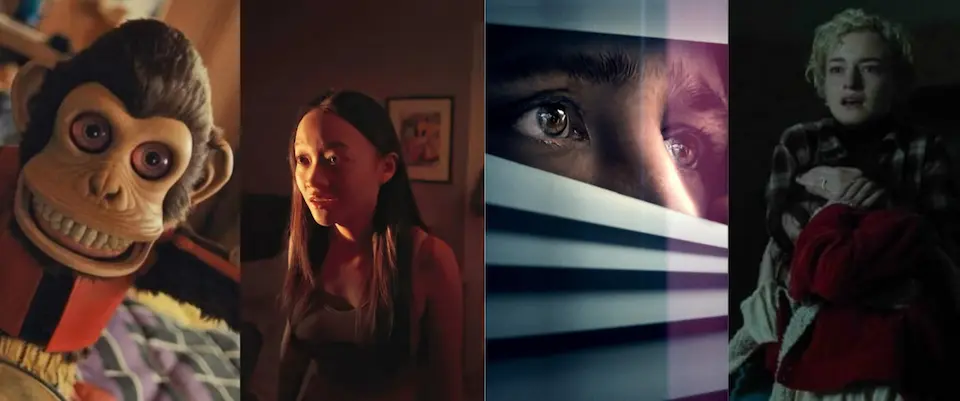Top 10 Fred Astaire and Ginger Rogers Movies
A small tour through the film works of the famous Hollywood couple, Fred Astaire and Ginger Rogers.
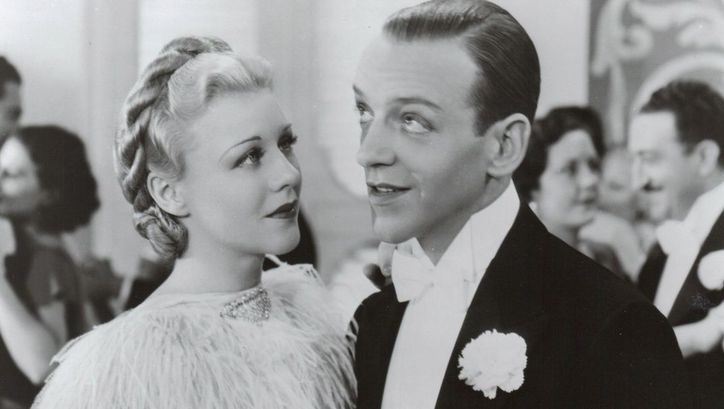
Even though several movies are released every year, old movies have a very particular charm for me. I enjoy them a bit too much, and I have managed to learn numerous things through them.
During the last months of 2020, my younger sister was considering applying for cinema school, so she was making a point to watch as many films as she could as a complement to the possible entrance exam materials.
As she likes musicals, and had not seen many old films until that moment, I suggested Top Hat and Swing Time. We ended up going through all ten of Fred and Ginger’s films in just a few days.
What is so great about Fred and Ginger’s films?
The comedy is light and innocent, but very effective. The conflict in most of the plots is simple and of easy resolution, lying largely in the constant and convenient misunderstandings among the characters, which push them into slightly absurd or sometimes totally bizarre situations. So misunderstanding is a word you’re going to read often.
It is fun to see the limited special effects and the way they shot the dance sequences, but also to observe how much social conventions and relationships between men and women have changed over time.
When it comes to the lead actors, there is something special about the two of them together. You may call it chemistry. They have a unique grace and charm that make any scene enjoyable. People tend to talk more about Fred’s dancing and singing, but we also have Ginger’s acting skills and her ability to keep up with a professional dancer as a partner.
Putting aside their individual talents, it is their teamwork that makes their movies so different from everything else you have seen. One could not have done it without the other.
So, after watching each one of their films, I have composed a list, going from my least favorites to the ones I fell in love with.
10. Flying Down to Rio (1933)
Composer Roger Bond (Gene Raymond) is working with his orchestra in a hotel in Miami when he spots beautiful Belinha (Dolores Del Rio) in the audience. He immediately falls in love with her. But their romance seems to be prevented by two facts: Belinha’s chaperone surveillance and her fiancé, who is waiting for her back at home. That love story will take us from America all the way to Brazil.
This is the first movie Fred and Ginger did together, playing supporting roles: Fred plays the accordionist of the orchestra and a good friend of Roger’s, while Ginger plays Honey Hales, the singer working with them.
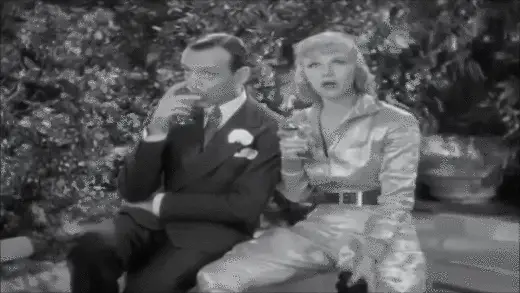
As I said, Fred and Ginger had very little screen time here, their most important scene was the carioca dance, when we got to see them dancing together for the first time.
Apart from that, the film held little interest to me. The plot was kind of messy, and Dolores del Rio did not make a great impression on me as Belinha. The scene of the “show” on the plane is quite strange.
But Flying Down to Rio had to be on the list for the simple reason that it was the beginning of one of the most significant partnerships in cinema. The movie’s final scene shows them together. The end of a movie, but the starting point of many more.
9. Roberta (1935)
John Kent (Randolph Scott) travels to Paris in the company of his friend Huck (Fred Astaire) and his band. After being rejected by the man who was supposed to employ them, the group turns to the only person John knows in the city for help: his aunt Minnie, owner of the famous gown shop “Roberta”.
In there, they will meet Countess Scharwenka, played by Ginger, a usual client (and, as we later discover, an old friend of Huck), and Stephenie, Minnie’s assistant and head designer of the shop, played by Irene Dunne.

The plot is entertaining enough, but I would have enjoyed more Fred and Ginger and less Irene Dunne. It is not that I do not like Irene Dunne, because I do. In other movies. Her character in Roberta is good and likable, but the scenes where she sings (two of them in exactly the same setting and for exactly the same reason) got me a little impatient.
In this one, their characters do not have much development, for the story only brings attention to them when they are dancing or singing.
Their best musical moment in this film is, without a doubt, “I’ll Be Hard to Handle”
8. The Story of Vernon and Irene Castle (1939)
When Vernon Castle meets Irene Foote, he is working on a slapstick comedy show that does not allow him to make the most of his talent. Irene, an aspiring dancer, convinces him to give ballroom dancing a try.
The couple gets married and travels to Paris, with the promise of a contract to have their own act. But it turns out that their employers were not interested in their dancing and just wanted Vernon to perform his former comedy show.
When their economic situation is becoming unsustainable, a miracle happens: an influential agent happens to see them performing, and arranges a tryout for them at the Café de Paris. Their dancing style is well received, and they become celebrities. They have everything they have dreamed of: money, recognition, and the chance to do what they love for a living. But the beginning of World War I takes Vernon away from home and from his wife.
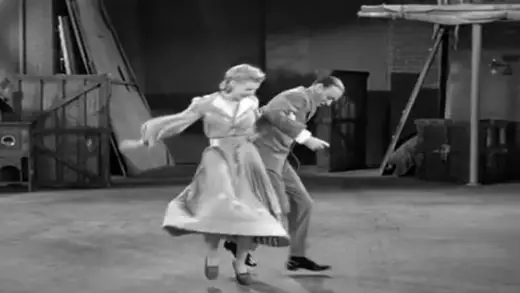
Though this film allows some comedy moments, it is the only one on the list that can be classified as a proper drama. The characters and their actions, based on a true story, are more realistic and believable than in the former movies.
Vernon and Irene Castle popularized dances just like the foxtrot, the ragtime, and other jazz rhythms, so their style was different from the things Fred and Ginger had done until that moment.
The dramatic tone leaves room for many excellent romantic scenes that maybe got more mixed up with the fun in previous films.
It is the last time Fred and Ginger worked together until their triumphant return in the late 1940s with The Barkleys of Broadway, and it is also the only one of their movies that does not have a happy ending.
7. Follow the Fleet (1936)
Although this movie has some amazing songs, the plot did not convince me.
At the beginning of the film, Astaire’s character, “Bake” Baker, lets us know that the protagonists used to be dancing partners, but that they split after Shirley (Rogers) rejects his offer of marriage. Heartbroken, Bake joins the Navy to forget about her. But of course, he finds himself back at home, and he has to go to call on her.
We also have the unwelcome addition of Harriet Hilliard as Connie, Shirley’s sister, whose love story with one of Bake’s navy buddies (Randolph Scott) takes far too much screen time for my liking. She sings two love songs, but I could not help but find her character quite boring.
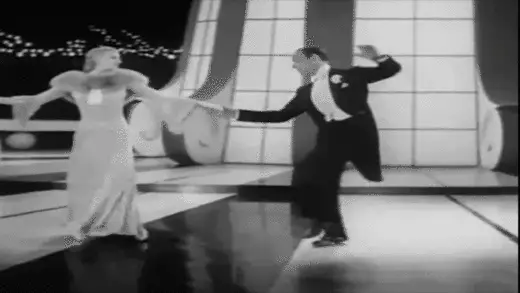
Still, Follow the Fleet is worth watching: all the songs and musical moments are formidable, and when Connie and her lover are not bothering too much, the story is entertaining.
My two favorite songs from this film are “I’m Putting All My Eggs in One Basket” and “Let Yourself Go”, but maybe the most well-known is “Let’s Face the Music and Dance” the romantic and emotional number of the story. Random fun fact: A scene in the movie The Shape of Water is based on that song.
6. The Barkleys of Broadway (1949)
.We can sum this film up in one word: nostalgia. It is like fan fiction that explores what Fred and Ginger’s lives would have been if they had gotten married in real life. Which is funny because Ginger ended up involved in that movie by pure chance. The role was originally meant for Judy Garland, who was supposed to pair up with Fred after their success on Easter Parade the year before. At the last moment, Garland was not able to do it due to health problems, and the part was offered to Ginger instead.
It lacks the spirit and humor of their most popular films, but it is a good addition to the list of works in common. It is also the only one of Fred and Ginger’s movies distributed by MGM (all their previous ones being RKO films). And the only one in color!
This time, the pair embodies Josh and Dinah Barkley, partners in life and on stage. The couple has made a successful career in musical comedy theater.
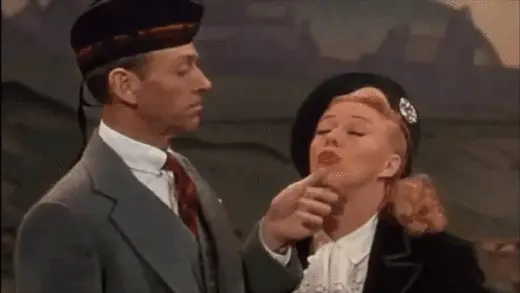
Dinah is offered the lead in a dramatic play, which would give her the chance to test her talent in a new genre, but also to get out of the shadow of her husband, who believes (as well as the press and the public) that he created her.
Her decision destabilizes the relationship in such a way that they decide to separate. But of course, Fred and Ginger can never stay apart in any movie.
When Josh discovers that Dinah is struggling with her acting in the new production, he starts to talk to her on the phone, pretending to be the director. This way, he can help her prepare without giving up on his “offended husband position”, for, in his opinion, nobody knows how to help Dinah to reach her full potential better than himself. And obviously, this is a good excuse to stay close to her.

Though the musical numbers in The Barkleys of Broadway are all good, “Bouncing The Blues” has no comparison. It is one of the best choreographies they have ever done. It evokes the dances of the first years of their partnership.
And to make all the fanatics get truly emotional, the movie also features the song “They Can’t Take That Away From Me” which has previously appeared in Shall We Dance. It is an experience to see them again, older and both with important careers of their own, dancing to that particular song, one of the most romantic recorded together.
5. Swing Time (1936)
Willing to make enough money to marry his fiancé, John “Lucky” Garnett, a dancer and gambler, travels to New York. There he meets Penny Carroll, a dance instructor, whom he antagonizes over an uncomfortable meeting in the street. Lucky follows her to her work to apologize, and their evident talent for dancing opens the door to some auditions for the pair.
But when feelings begin to blossom between them, Lucky must make a choice: go back home with the money, or take a chance on his love for his new dance partner.

Swing Time is, in my opinion, the movie with the best songs on this list: “A Fine Romance”, “The Way You Look Tonight” and “Never Gonna Dance” are good examples. And it features my favorite song sang by the pair, “Pick Yourself Up”.
In that particular scene, Penny is committed to the mission of teaching Lucky to dance. The irony of having someone teach Fred Astaire how to dance is not lost on me.
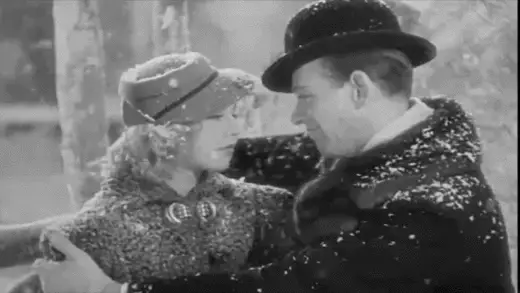
We also have Helen Broderick and Victor Moore as Penny and Lucky’s friends. Despite being placed in the story as comic relief, they manage to make their place and gain the audience’s sympathy.
It is one of the movies that had better critical reception, and success at the box office.
4. Top Hat (1935)
Where do I start? This film has so many iconic scenes and songs!
Jerry Travers, the famous dancer (played by Fred), comes to London to be the star of a show produced by his friend Horace Hardwick, played by Edward Everett Horton. There he meets Dale Tremont (Ginger), a beautiful woman staying at the same hotel, and he falls in love with her.
A confusion (at this point, may I say another confusion?) will make Dale think that this man, who fancies her so much and to whom she feels undeniably attracted, is no other than Horace Hardwick, her friend’s husband.

Good news: This friend of Dale is played by Helen Broderick in another memorable supporting role. Count on her to improve a movie. Her character, Madge, is married to Hardwick, but she does not give a damn about what her husband is up to.
But Dale does. Indignant, she tries her best to make it clear how disgusted she is with the man. Travers, unaware of the situation and not used to giving up, will find in every rejection a reason to keep trying to win her heart.
The misunderstanding leads everyone to ridiculous situations, including an unexpected marriage and some amazing dancing moments.
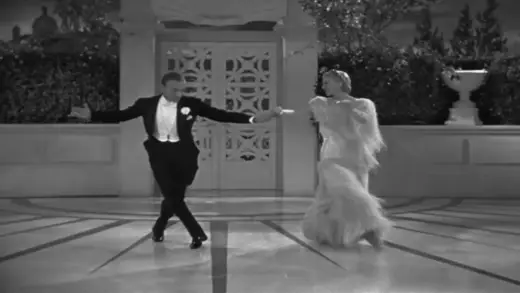
Most of the songs made for this Top Hat are still consider American classics. Even if you have never watched the film, you probably know some of them: “Top Hat, White Tie, And Tails”, “The Piccolino’s” and the one and only “Cheek To Cheek”
As the most famous work of the pair, Top Hat was a huge box office success at the time of its release, and it is still critically acclaimed.
It is also the first Fred and Ginger movie I watched in my life, so it has a special place in my heart.
3. The Gay Divorcee (1934)
The first one of Ginger and Fred’s movies that was written for them.
This time around, Ginger plays Mimi Glossop, a woman seeking a divorce from her husband. She and her aunt hire the services of lawyer Egbert Fitzgerald (played by Edward Everett Horton)
As Mimi’s husband refuses to divorce her, Fitzgerald’s advice is to arrange a situation to make him believe that her wife has a lover. With that purpose, he hires a co-respondent man (Erik Rhodes) who must spend the night at Mimi’s hotel room and warn the husband, so he shows up and finds them “in fraganti”
For his part, Guy Holden (Fred’s character) meets Mimi when she arrives in England at the beginning of the film, and (classic Fred) instantly falls in love with her. As he does not know who she is, he spends days trying to find her in the city and, later on, chasing after her.

His friendship with Fitzgerald conveniently takes him to the same hotel Mimi is staying at. Here is when the real fun begins, for a silly mistake has Mimi believing that Guy is the co-respondent, causing lots of confusion.
The Gay Divorcee also features two of the most recognized songs of Fred and Ginger’s partnership: “The Continental” winner of the very first Academy Award for Best Original Song, as well as “Night and Day”
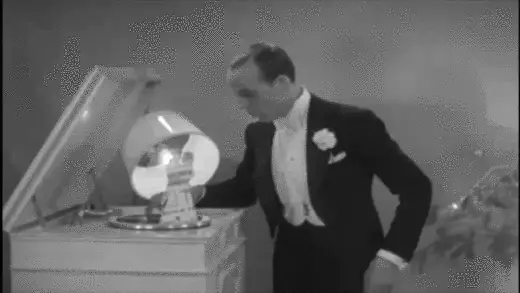
The only thing I found strange was a musical number placed in the middle of the film called “Let’s knock knees”. The star of the song is a still-unknown Betty Grable. It interrupts the film, for it seems disconnected from it. As the song ends, Fred Astaire comes in sight again, much to the audience’s relief.
2. Shall We Dance? (1937)
Peter P. Peters, known as Petrov, is an American ballet dancer working for a company in Paris. As much as he enjoys ballet, he wishes to try some other styles and is interested, to the horror of the company owner, in jazz dancing.
Peter wants to meet beautiful Linda Keene, a famous dancer with whom he expects to perform someday. He tries to talk to her in Paris, but she is not interested in meeting him.
They meet again on an ocean liner (which Peter purposefully boarded to be with her), and after some initial conflict, they develop a closer relationship.
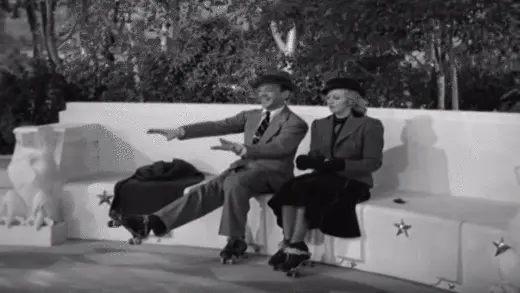
Both of them are pretty recognized for their work, so when they start to be seen together constantly, a rumor that they have been married for a while starts to take force.
An indiscretion committed by a person close to them makes Linda believe that Peter spread the rumor on purpose to get rid of another woman who was after him. Hurt and resentful, she gets engaged to another man. But Peter is not willing to give up on her.
At some point, Linda’s manager also interferes in the matter, trying to launch more publicity for her. The result is one of the most bizarre scenes I have ever seen. I leave it here so you can see it for yourself.

After some coming and going, Linda decides that the only way to fix the mess is to marry Peter for real, so she can then divorce him and put the rumors of their relationship to rest.
A totally logical solution. But at this point, we know that Ginger’s characters tend to marry in a rush, and for the craziest reasons.
As for the songs, we have a little jewel: “Let’s Call The Whole Thing Off”, choreographed to have them dancing on roller skates. We also have “They Can’t Take That Away From Me,” as well as “They All Laughed,” “Beginner’s Luck,” and “Slap That Bass.”
Fun fact: A little part of the movie clip for “Slap That Base” appears in the film Joker.
1. Carefree (1938)
And finally, number one. It is not only my favorite of the Fred and Ginger collaborations but also one of my favorite comedies ever. I am aware it might be their less famous one, and if I am not mistaken, it did not do great at the box office. I will not pretend to understand that.
Fred plays psychiatrist Tony Flagged, who is asked to take a woman named Amanda Cooper (played by Ginger) as a patient. The request comes from one of Tony’s friends and Amanda’s boyfriend, who wants her reluctance to get married to him to be “treated”. Though not very eagerly, Tony accepts to try to help the couple, using dream analysis and hypnosis techniques on Amanda. But after some days of attempted treatment, the doctor and patient end up falling in love.
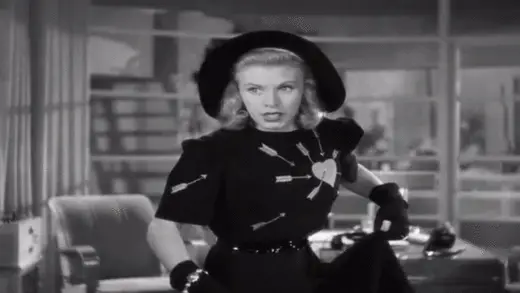
Unlike most of their previous movies, Carefree brings us a more dramatic story. This allows Ginger’s talent to stand out the most. I feel this movie is more about her than about Astaire. It does not mean she abandoned comedy at all; Ginger nails each one of the funny moments and manages to make me laugh more than in any of the movies on the list.
To prevent Tony from discovering that she has fallen in love with him, Amanda invents a dream. She manages to be so utterly convincing that the therapist believes that he has a patient with critical mental conditions.
In the scenes in which she is in a “trance” and, therefore, uninhibited and out of control, we can see how she takes the comedy from her previous roles to a whole new level. The craziness of it all and the attempts of the rest of the characters to cope with her are truly hilarious.
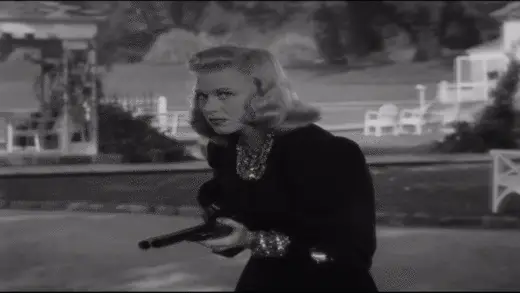
Carefree featured only four musical numbers, including the Academy Award-nominated “Change Partners”, and it featured the best dancing scene of their partnership: “The Yam”
This scene is great, not for the choreography or the song (I’ve read that Fred thought it to be silly and refused to sing it), but for the way it was filmed. Usually, when Fred and Ginger dance, the camera stays still, and they dance mostly in a single place. In “The Yam”, they get to make the most of the space, and the camera (and the people) follow them around.

If you have watched some (or all) of these movies, I strongly recommend you to do so. You will find they are worth your time!

